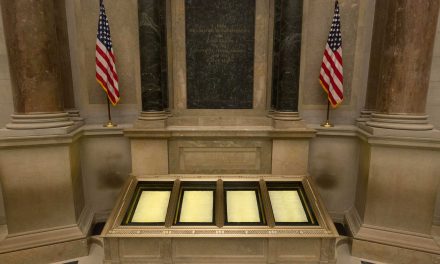
Governor Evers and the Wisconsin Economic Development Corporation (WEDC) should sit down with Foxconn and talk about options for making the contract better for all involved. Whether they can and should actually sign a new contract is a much harder question to answer and will depend on the negotiations.
A new deal is worth pursuing because it could potentially reduce the risk that Foxconn will drop its plans for a manufacturing facility in Racine County. As someone who thinks the original deal was far too expensive, a year or so ago I might not have been bothered if Foxconn abandoned its plans. But at this point, that outcome would be a costly blow for state and local taxpayers since hundreds of millions of tax dollars have already been spent for infrastructure improvements for the planned facility.
Of course, the goal of negotiating a new deal shouldn’t just be about getting Foxconn to employ workers in Wisconsin. The state should reject any proposal that would lower the bar for Foxconn to qualify for tax credits if it does not also include concessions that improve the deal for state and local taxpayers.
Although Foxconn has not said which parts of the contract it would like to change, a couple of potential problems stand out. At the top of the list is that the company’s scaled-back plans and its slower timetable could make it difficult for Foxconn to qualify for much of the funding state lawmakers approved for the cash subsidies referred to as “job creation tax credits.”
For example, if the company meets the minimum standards over the next four years for job creation, and then its employment plateaus at a total of 6,000 workers, it would only qualify for less than a tenth of the $1.5 billion set aside for the payroll subsidies — good for taxpayers, but not desirable for Foxconn.
A second part of the contract that Foxconn might want to change is a provision that makes a large portion of the other cash payments to Foxconn (i.e., the so-called “investment tax credits”) contingent upon building a Generation 10.5 LCD factory. Since Foxconn now plans to build a Generation 6 LCD factory, the company appears to be ineligible for the very generous 15% subsidy for its expenditures for land and buildings.
It is possible that Foxconn may not be as concerned about the second issue. Mark Hogan, the WEDC CEO, suggested last year that WEDC can ignore that contract language. However, doing so might lead to litigation (assuming another party has standing to sue), and it would surely set a bad precedent. If WEDC decides it can disregard one section of what has been described as an “ironclad” contract, what other contract provisions would the state be pressured to waive?
These two potential contract problems for Foxconn give the company at least as much reason as the state for wanting to renegotiate. A recent article in Bloomberg by Austin Carr does a very good job of describing what the state should try to get out of a new deal with Foxconn. Here are several of his five recommendations:
1. FIGURE OUT THE REAL ECONOMIC IMPACT
I am glad that Carr led with this recommendation; a fundamental problem with the current deal is that it was based on unrealistic economic assumptions about plans that were probably never feasible, and are no longer relevant. Quoting from the article: “The original deal was based on fiscal analyses for an entirely different operation — a much larger facility, with a faster hiring schedule and different types of jobs, which the company has since inexplicably modified.
Yet the state continues relying on studies of this now-irrelevant project scope to justify extensive corporate subsidies.” The state needs to insist on far more transparency about Foxconn’s plans, along with a new and much more objective analysis of the economic costs and benefits of any new deal that enables Foxconn to proceed.
2. REDUCE CORPORATE SUBSIDIES
Carr makes the point that the “cash subsidies are abnormally large; other companies have received roughly half these financial incentives.” Many economists have said much the same thing, and I wholeheartedly agree. However, right now I think what the state should do is more of a restructuring of the subsidies than a reduction because the existing contract already brings down the likely payout.
Joanne Brown and I calculated what the “tax credits” would be for a hypothetical manufacturing plant that employs 6,000 people by 2022 (with little or no job growth beyond that) and costs Foxconn $6 billion for land, buildings and equipment. Under the assumptions we used, Foxconn would qualify for “only” $112 million of jobs subsidies, but $900 million for capital investment subsidies – if WEDC ignores the contract language that appears to make Foxconn ineligible for much of those subsidies.
After that point, Foxconn might not meet the thresholds for getting any more employment subsidies, but the state could be obligated to pay 15% for new capital expenditures, including spending to automate production. Because that could create an incentive for using more robots and fewer workers, the state might want to ease the thresholds for qualifying for jobs subsidies, if Foxconn is willing to give some ground on the investment subsidies.
3. ENCOURAGE FOXCONN TO BUY LOCALLY
One of the major selling points of the Foxconn deal was the claim that there would be a large multiplier effect from jobs in Wisconsin in the company’s “supply chain.” That assumption was a key to the analysis that new employment in the state could help generate enough increased tax revenue to offset the cost of the subsidies after 25 years. But as Carr writes, “One of the biggest shortcomings of Wisconsin’s contract is that it doesn’t stipulate that Foxconn buy from suppliers in the state.”
The revisions to Foxconn’s plans appear to increase the risk that it will rely heavily on imported components. With those considerations in mind, Carr recommends that a new contract should “incentivize a Wisconsin-first approach.” In a May 2nd follow-up article, he documents a huge gap between the corporation’s promises to buy locally and its purchases to date.
Carr’s other recommendations are that the new deal should increase monitoring and metrics and impose “reasonable penalties” when Foxconn misses hiring and investment targets. To his very sensible list, I would add two things: the parties should reconsider some of the exemptions from environmental regulations – which might require a statutory change – in order to address potential runoff and flooding issues, and the contract should change how new Foxconn jobs are counted, to reduce the risk that the company can game the rules for qualifying for the employment subsidies.
Although Foxconn has even more reason to want a new deal than the state does, there are plenty of reasons why the state should make a sincere effort to change/improve the contract. But the essential element is Carr’s first recommendation – that this time around the negotiations should be grounded in a solid, objective analysis of what Foxconn is planning and what economic and fiscal impact the planned manufacturing plant would have in our state.
Jon Peacock and Joanne Brown
Originally published on wisconsinbudgetproject.org
Help support the Wisconsin Budget Project with a donation. The organization is engaged in analysis and education on state budget and tax issues, particularly those relating to low-income families. It seeks to broaden the debate on budget and tax policy through public education and by encouraging civic engagement on these issues.














